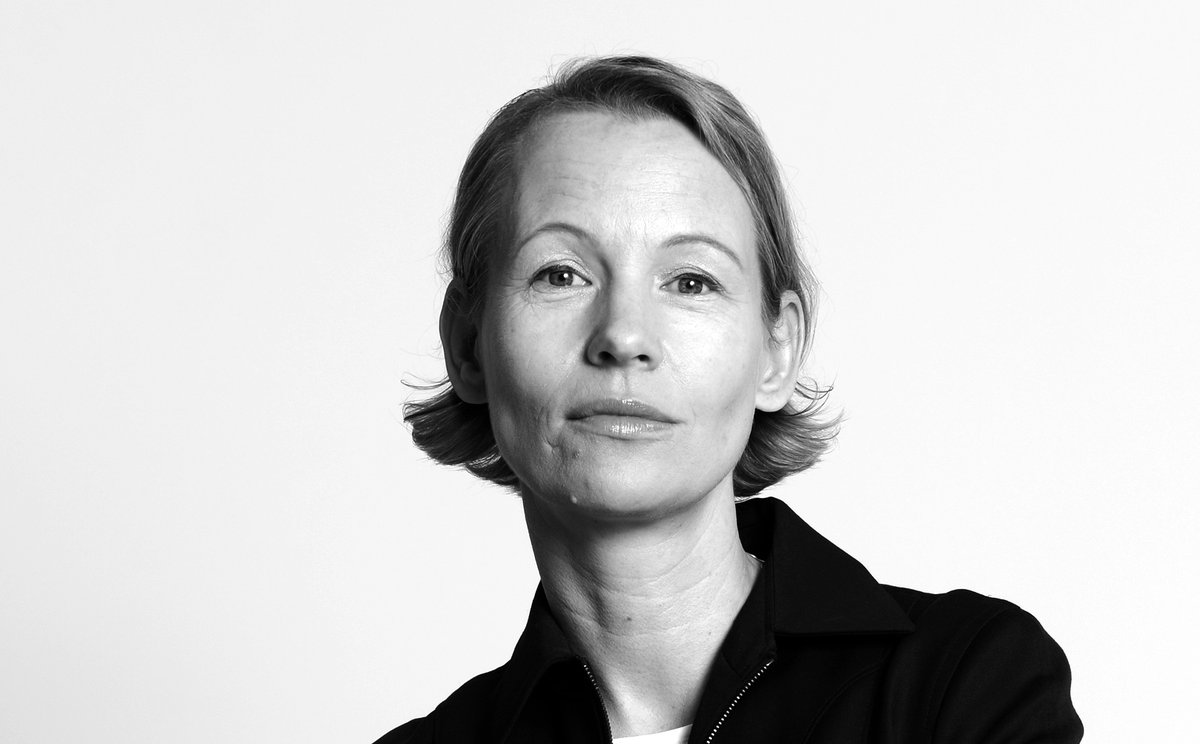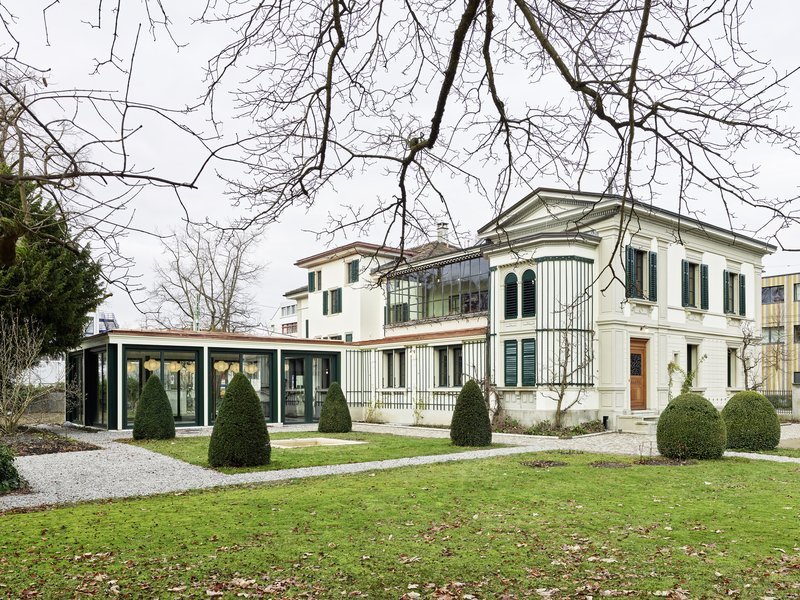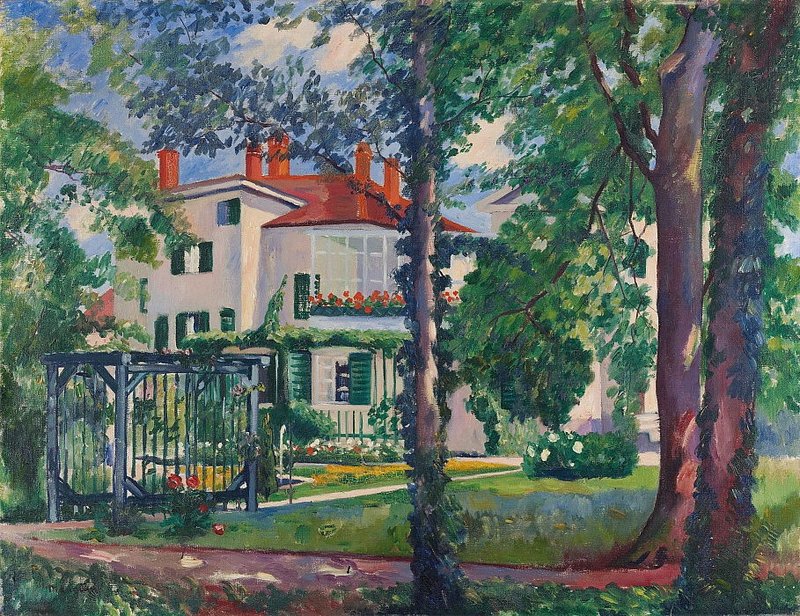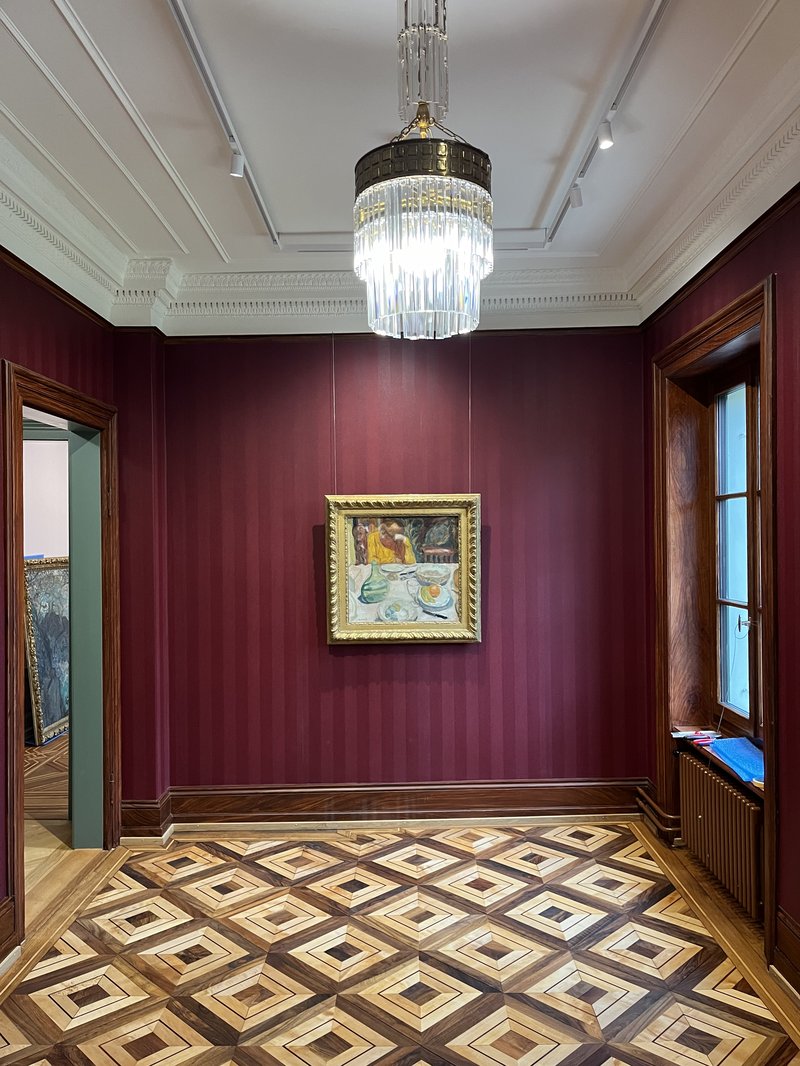Greetings from the architect Anna Jessen
On the occasion of the opening of Villa Flora, architect Anna Jessen from Jessenvollenweider explained her thoughts on the conversion

Anna Jessen
Foto: © Nina Mann
Dear visitors to the Villa Flora,
in March 2024, we were able to complete a long-standing project and the renovated Villa Flora, which was extended with the garden pavilion, was handed over to a new phase of its life – as a permanent part of the Kunst Museum Winterthur.
The Villa Flora has already experienced several such moments. As an ensemble of house, outbuilding, garden, various conversions and extensions, it has been built as an organism since 1846 and has been adapted to a wide variety of uses, needs and interests. In a modern and contemporary sense, it is an exemplary sustainable building – in an economic, ecological and, above all, cultural sense. The Villa Flora stands in its place here in Winterthur as a contemporary witness to cultural continuity.
I wasn't there myself, but married to an ophthalmologist, Hedy Hahnloser must have had a very keen eye and instinct for things that go together – be it people, as yet unknown pictures, flowers on the table or matching, newly designed tablecloths and wallpaper in the room. And: she had the courage and ability to see very early on what the zeitgeist would be in the future.

The freshly renovated Villa Flora 2023.
Foto: © Georg Aerni
In 2013, the city of Winterthur, into whose hands the Flora had been transferred, launched a competition to renovate and extend the building. The declared aim was to transform the actual residential building into a contemporary museum that would meet all current requirements in terms of accessibility, safety technology and climatic conditions, while treating the existing building with the utmost care: The private space was to become a public institution.
The project connects a garden pavilion to the old kitchen, which will no longer be necessary in the future, and creates a new entrance sequence with a cash desk, store, checkroom and small meeting room, which is directly connected to the historic staircase by a new elevator. As a garden hall, the main room of the elegant pavilion is a new place to meet and exchange ideas and a contemporary counterpart to Robert Rittmeyer's historic lounge.

Henri Manguin, La Villa Flora, 1912
Kunst Museum Winterthur, Hahnloser/Jaeggli Stiftung
Foto: Reto Pedrini, Zürich
Henri Manguin's painting from 1912, in which a simple blue pergola can be seen in front of the garden façade of Villa Flora, was the inspiration and reference for the design and idea of the extension. Our glazed pergola is also constructed in wood throughout and painted in two colors: a dark blue-green, which echoes the color of the windows and shutters of the old building, and an off-white, which connects the pavilion with the wall surfaces of the existing building – in a way, a thoroughly painterly strategy of difference and connection. The pavilion closes off the garden from the street and creates a new entrance situation, no longer from the noisy street, but as an introduction to a quiet collection from the more intimate side of the garden. At the same time, it defines the garden as a green room that extends the inner course of the house to the outside.

View into the newly furnished Villa Flora
The individual rooms in the existing house will be combined into thematically differentiated groups of rooms and combined into different tours in terms of color and design. Although the house will not be inhabited in the future, it aims to keep alive the authentic life that once took place here without museumizing it. It wants to translate this spirit into the present and, as such, be a place and space for the pictures that are directly connected to the house, but also remain open and curious about new directions and paths that are emerging in contemporary art.
There are new white rooms for the temporary exhibitions, but we have also had old wallpapers reprinted, in particular wallpaper designs by Albin Müller and Hedy Hahnloser herself, such as the striking foliage in the new-old staircase – we have a little architectural delight in the new wallpaper for the garden room, which takes fabric motifs from an old curtain by Hedy Hahnloser, reconfigures them and thus quietly reminds us of her.
Twelve years after the competition was announced, the imagined project has now become reality in collaboration with a wonderful team of planners, representatives of the public sector, friends of Villa Flora and the great commitment of the Kunstmuseum Winterthur itself, and will thus form a striking new chapter in the history of Villa Flora, which will certainly experience many more epochs.
Sgd.
Anna Jessen
March 14, 2024


